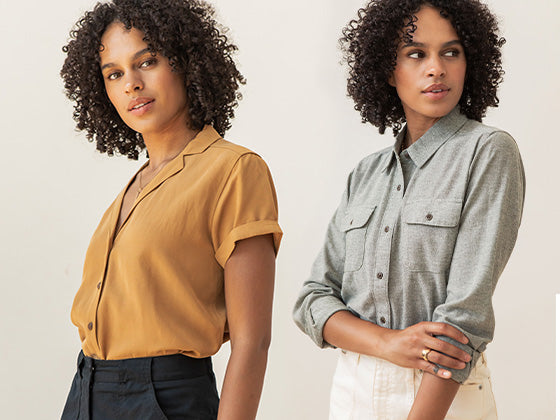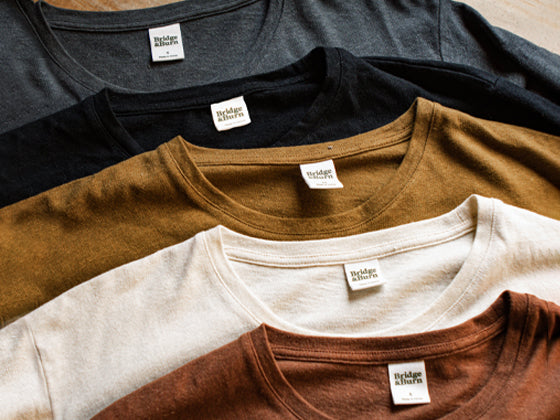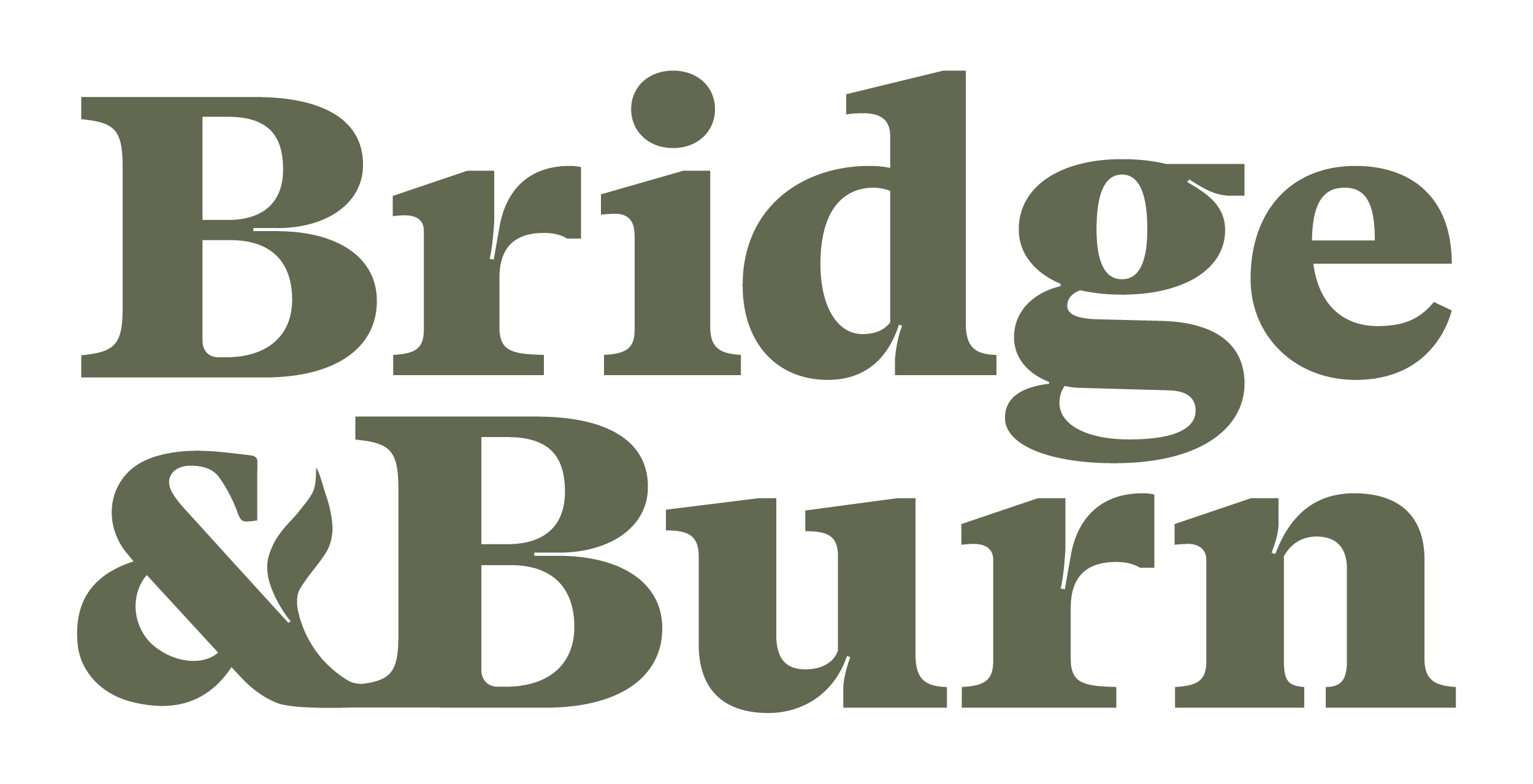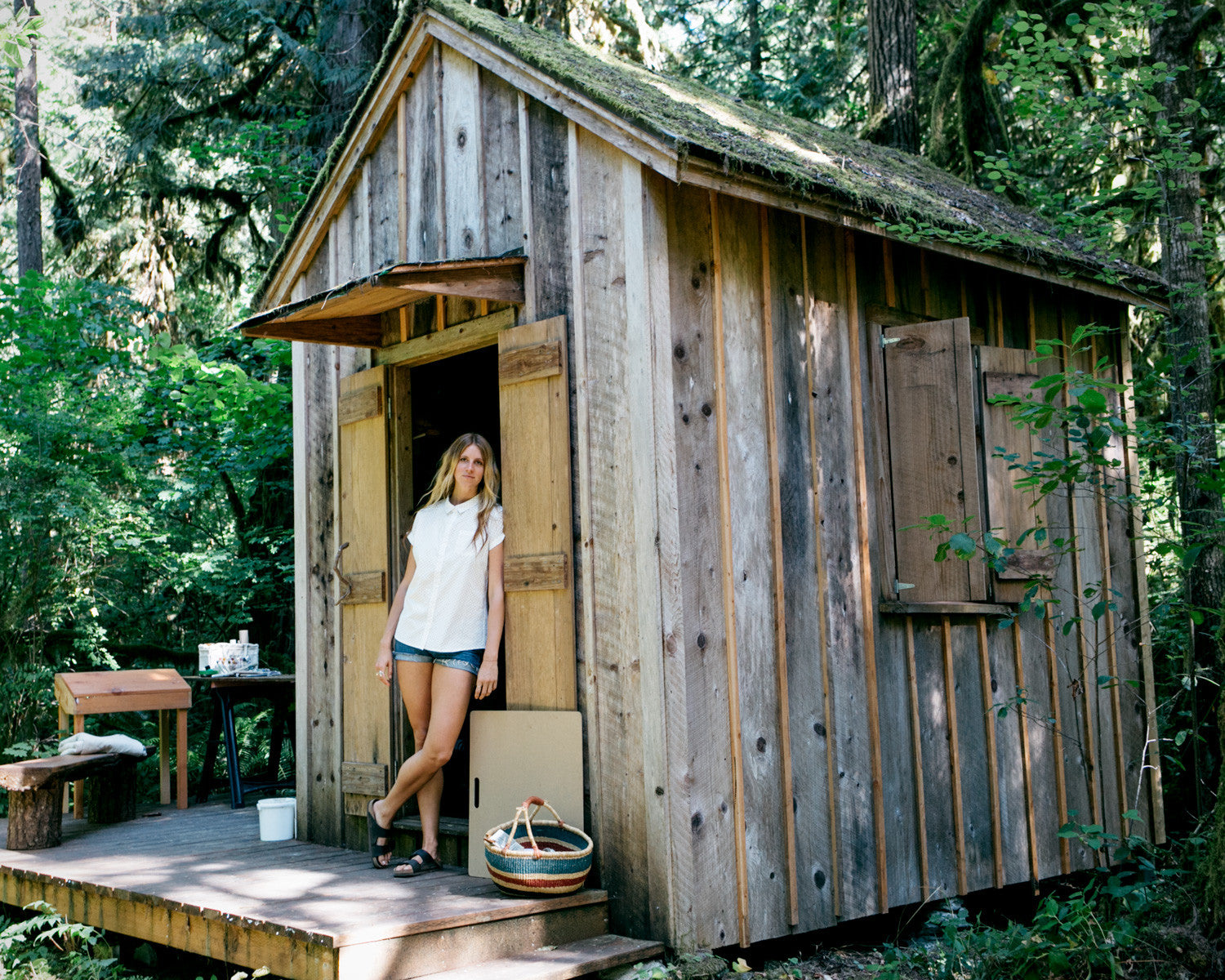
Creating Bridge & Burn required a leap of faith. Founder Erik Prowell quit his job as a software developer, lit the proverbial match, and threw it—burning the bridge of working for anyone else behind him. With no formal training, he trusted his smarts and his strong work ethic, and took the plunge. In that spirit, Bridge Burners is a series showcasing people who are taking a similar leap.
Many of the people profiled in our “Bridge Burners” series have had one profound detour in their lives and careers; one decisive moment where they had the courage to pivot from the easy path and take control. For painter Allison Kunath, this approach is emerging as an ongoing part of her process. Her refusal to settle on even successful endeavors—at the expense of long-term creative potential—is the kind of constant faith-leaping that led her to spend the month of August in a tiny, tiny cabin out in the old growth forest of Molalla, Oregon. There, Bridge & Burn caught up with her, rolling up our pant legs to wander into the babbling creek that served as her summer studio.
Ordinarily, Kunath calls the Venice neighborhood of Los Angeles home, a far cry from her Oregon digs. The cabin is barely large enough for a bed, has no insulation nor plumbing nor electricity (so she cleared and dug herself a fire pit out front), but is just steps away from the flat rocks and verdant moss that make up Trout Creek’s bed, and is the latest in a series of self-made artist residencies that have also included stints in Mexico and Panama.


Originally born in Ventura, California, Kunath was raised in a Minnesotan suburb of the Twin Cities. Her mother, an amateur artist, fostered Kunath’s early interests in arts and crafts, but she also inherited the hesitation to pursue a career in fine art. Instead she concentrated on volleyball, winning a scholarship to Minnesota State University in Mankato. It was a time she remembers as “disjointed.” Student culture was mostly focused on athletics, and the rural setting offered little else in the way of activities besides: “drinking and house parties and maybe a hockey game.”
Wanting to study something creative but worried about career prospects, Kunath settled for a major in graphic design, which “seemed creative, but also viable in the real world.” Still, she struggled to find her place in the university’s environment. It wasn’t the art school experience in which she would have thrived. Receiving rejection letters from schools like RISD and SCAD reinforced a “fear-based mindset,” that defined the period, during which she rarely picked up a paintbrush. “I felt like I was always waiting for permission, waiting for others to tell me what I was good enough to do.”
Shortly after graduation she made her way back to Southern California, where she still had some family and had visited often growing up. There, she landed her first real job in LA, at a boutique design firm. In many ways it was ideal: as part of an intimate four person team, she loved the mentorship of her three bosses and the casual atmosphere, but the work itself was often under-stimulating for everyone involved and the partners decided to shutter it to pursue other things.
Twenty-two years old and out of a job, Kunath made her first professional leap of faith. Rather than seek out the security of another full-time gig, she went freelance, taking on small graphic design jobs for a couple hundred bucks here and there, as well as re-embracing her work as a painter and opening a shop on Etsy. For a time, it worked. Income became more readily available, and like many artists she was able to use her commercial business to maintain a studio practice.
Many would have stopped here, content to live a financially viable life creatively, regardless of context. But on a trip to Telluride with friends, Kunath had a breakthrough. She found herself dreading the return home, “so I decided to change what my everyday routine looked like.” It was the first of many decisions that required her to wrestle with creative guilt. She knew she was lucky, and that many people were working harder to have less… but she had greater goals. Gradually she began turning down graphic design work in favor of concentrating on her own growth and body of work.

Fortuitously, it was at around this time that she got her first commission for a mural. A global import company, paying only for her supplies, approached her to make a portrait of their namesake, Marco Polo, on the side of their building in Santa Monica. It’s a piece that’s representative of the style Kunath first became known for. Based on a distinct geometric formula, she had developed a technique of illustration that became her signature. More mural projects came her way, as well as private portrait and tattoo design commissions. Once again, she found herself in what most would consider a sweet spot. Once again, she decided not to settle.
“Earlier this year I made an important declaration that the client work I do has to feel aligned with my mission, vision and current studio work.” Continuing to make geometric portraits “wouldn’t kill me, but wouldn’t teach me anything new either… if it’s a parallel move, what’s the point?” She struggles a bit to avoid dismissing the style entirely. “I don’t have the right to say my work from that period didn’t impact people, but it often didn’t give me a greater sense of purpose… I have a lot to thank for that style, but it became a cage, a technique and system that I mastered, but I wasn’t evolving. People were coming to me for a specific formula, rather than my whole creative vision. There is still a certain value to working in that style—but it feels super confining.” So, she lit another match. “In the span of a week, I said no to three different mural projects that all wanted the same generic, geometric beach scene. It made me realize that if I’m doing right in my life and creative process, I’ve got to push past grooves that start to feel comfortable.
Other priorities have shifted too. Instead of working in order to fund travel, Kunath finds herself traveling in order to foster self-reflection and advance her work. In Molalla she set up a workspace literally in the midst of the creek, and another on her cabin’s porch, pursuing a series of paintings called Letters To My Unmet Self. Unlike the hard graphic black and white of her previous style, these pieces are curving, abstract meditations on what she might say to herself if it was possible to speak to a younger version, or what an older version might say to her now. The results are something like psychic hieroglyphs, rendered in a dreamscape of harmonious pastels. It’s at once a continuation of her line-based work and a completely new departure that’s vivid with fresh energy.


“It’s about the idea that reality as we experience it is pretty narrow. There’s a lot happening out there that we’re not consciously privy to. If our awareness was sharp enough to perceive more than what meets the eye in the physical world, maybe we could learn things from the experience of others, or different versions of ourselves that existed in another time. What if I could talk to my future self and get advice on what to pay attention to, what challenges to lean into, and which relationships hold big important lessons?”
The question now is whether the following she’s amassed based on one style will follow her into the new. With a platform like Instagram seeming poised for replacement, Kunath, like many artists who have built themselves through self-promotion, is preparing for another change, but doesn’t know what’s coming. “It’s interesting and scary, you’ve just gotta hope your audience goes with you. Luckily, people expect an artist to evolve.” She’s made it her mission to push the limits she’s set for herself, and disregard the expectations of others. “Sometimes confidence comes from the moment when you have the most fear. The leap into the unknown is scary, but staying stuck in the comfortable ‘known’ is even worse.”
As Kunath continues to forge her own path, there is a north star she follows that guides her work, no matter what form it takes.
“I’m most interested in connection… the way one person connects to another, and the way that person connects to themselves. I’m fascinated by how it affects the way we interact and the stories we tell. My hope is that my work encourages self awareness, deeper connections, and helps to create a world that is less fractured and prone to harm.”
As Kunath continues to focus on her relationship with herself and the world around her, the intention is that her work will become more honest, and tell more of her story—and it seems that acceptance is becoming an increasing part of that story. No longer waiting for permission to be who she is, the artist has given herself the green light to create work motivated by exploration and understanding rather than the accumulation of “likes” and other debatable marks of success.
Written by Marjorie Skinner.
Photos by Erik Prowell.
